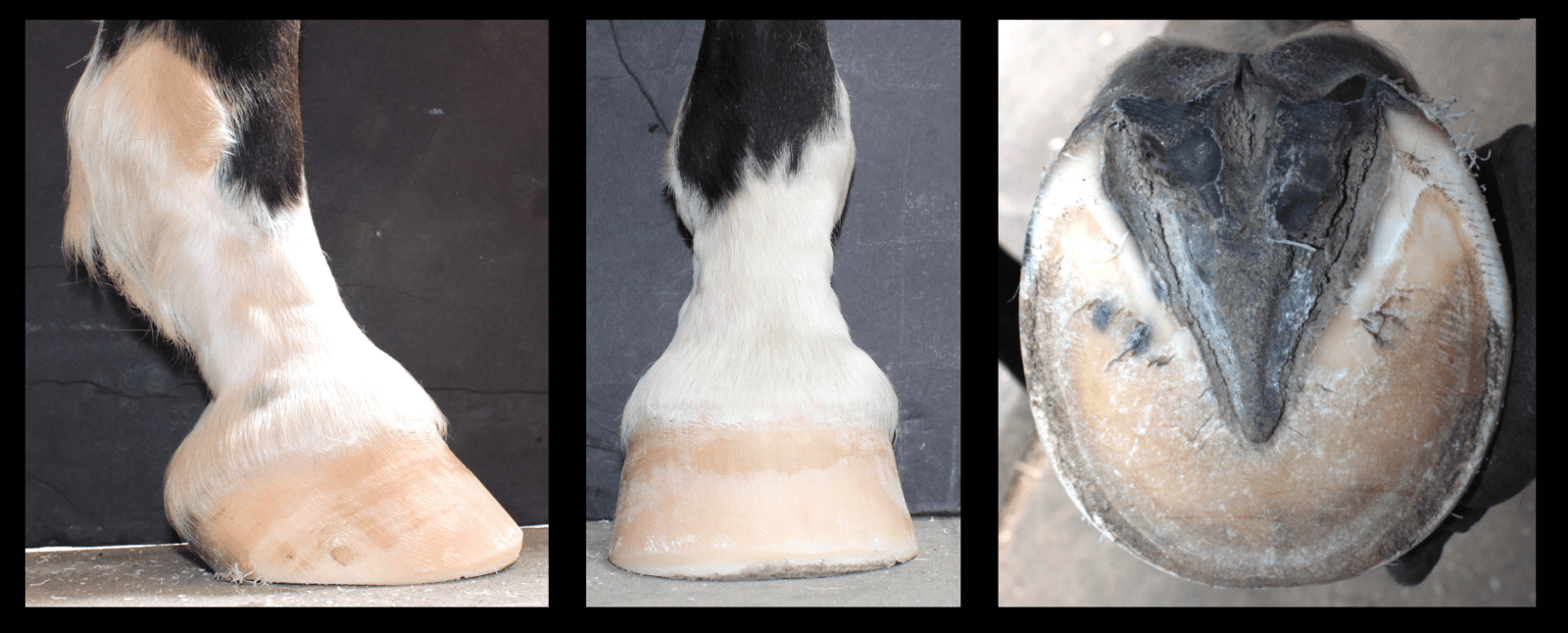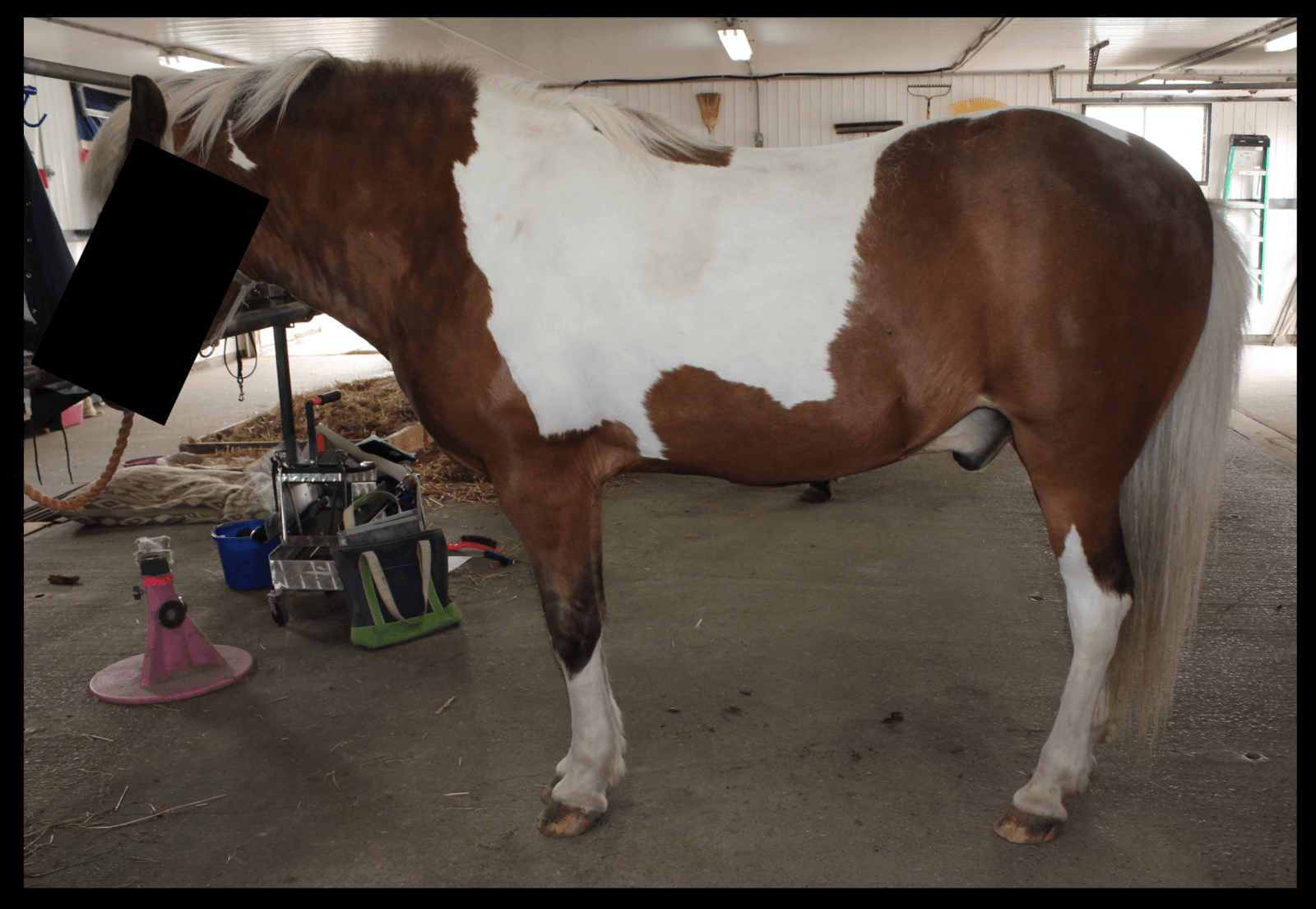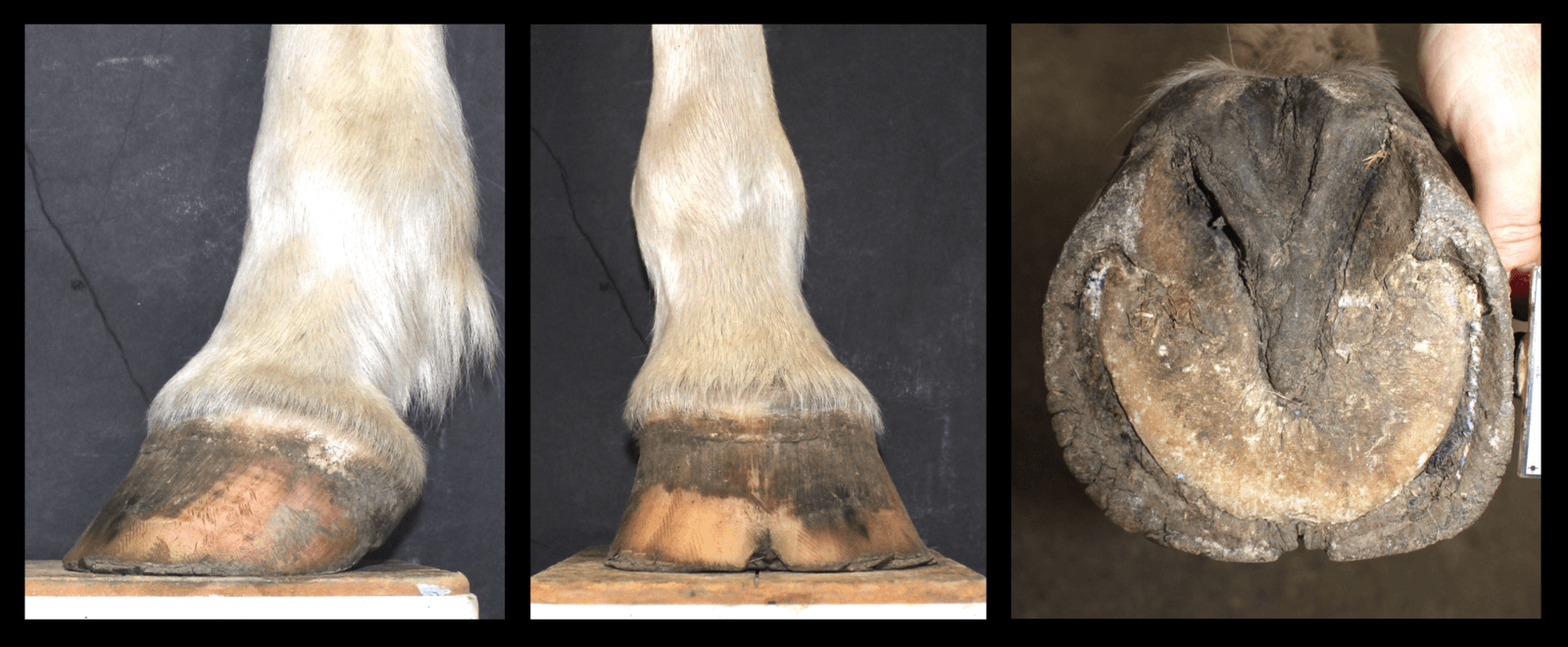This year we’ve seen more horses in our area developing spring laminitis than ever before. Many apparently healthy, stable, sound horses becoming foot sore with heat and digital pulses seemingly out of the blue.

We often stop and ask why? Is it the unseasonably warm winter we’ve had causing higher carbohydrate levels in the grass? Is it the increased incidence of Lyme Disease compared to other years? Or maybe it’s the stress on the horse of extreme temperature changes in the last month, with freezing temperatures changing to sunny and 70 degrees back and forth several times over the past month?
The reality is that most times it’s not just one factor that causes a horse to tip over into active laminitis, but many different factors that unfortunately come together at the same time. And some horses are more at risk than others. Common risk factors include:
- Obesity
- History of previous laminitis
- History of metabolic disorders
- Access to spring grass without restriction or management
- Administering multiple vaccines at one time
- Administering heavy duty wormers
- Administering Corticosteroids
- Emotional stress
- Underlying systemic illness
- Mechanical stresses on the feet
- Current dietary protocols
- Overworking or under working your horse
- Genetic pre-disposition
Individually, the items on this list may not be too concerning. Put several of them together, though, and it can be enough to push the horse over into active laminitis.
Another factor to consider is many times laminitis is there long before we see acute symptoms. Subclinical laminitis is inflammation in the laminae without evidence of pain, heat or digital pulses. Yet we can often see evidence of laminar inflammation before active laminitis is noted.
Signs the horse may be having subclinical laminitis:
- The horse’s gait shortens on hard ground
- The horse’s soles have become thinner
- The horse’s feet have bruising in the toe/white line area
- Your horse’s feet develop significant flares and dishing at the toe
- The horse’s neck gets bigger (cresty) and is hard or firm on palpation
- The horse exhibits post-trimming/shoeing sensitivity where there had been none in the past
This is an example of a horse who had many of the signs of sub-clinical laminitis before unfortunately rolling over into active laminitis:


If you suspect a horse has laminitis:
- Take the horse off of any pasture
- Put the horse somewhere they will stand quietly and provide some foot protection:
- Deeply bedded stall
- Hoof Boots with soft pads like the EasyBoot Cloud or a boot with a soft Comfort Pad
- Call the Veterinarian:
- The vet may do some blood work to determine risk status for metabolic disorders
- The vet may recommend some anti-inflammatory support like Bute or Banamine
- The vet may recommend icing the horse’s feet to reduce inflammation and ease pain
- The vet may also want to do baseline radiographs so any further laminar changes can be assess as needed in the future.
- Implement an emergency diet to reduce potential insulin spikes like Dr Kellon’s: ECIR Emergency Diet
To help prevent these types of laminitis:
- Have a dry lot to get your horse off of grass at high risk times.
- Monitor your horse’s weight so they stay in an ideal range without obesity, and if you see them gaining weight take action so they lose weight.
- Educate yourself about diets that help horses maintain level insulin
- Space out vaccines and worming to reduce stressing your horse during high risk times, especially spring and fall.
- Maintain a strict hoof care schedule all year long to keep the horse’s feet healthy





